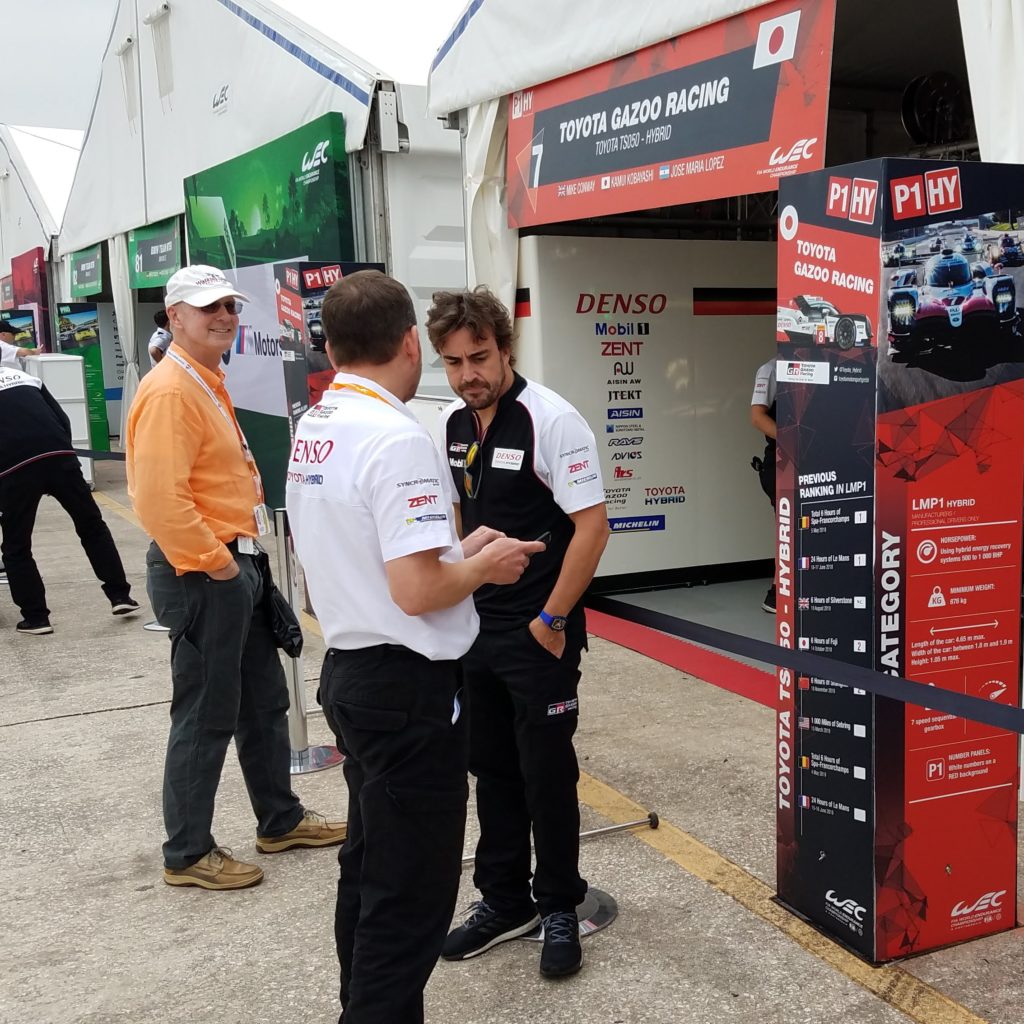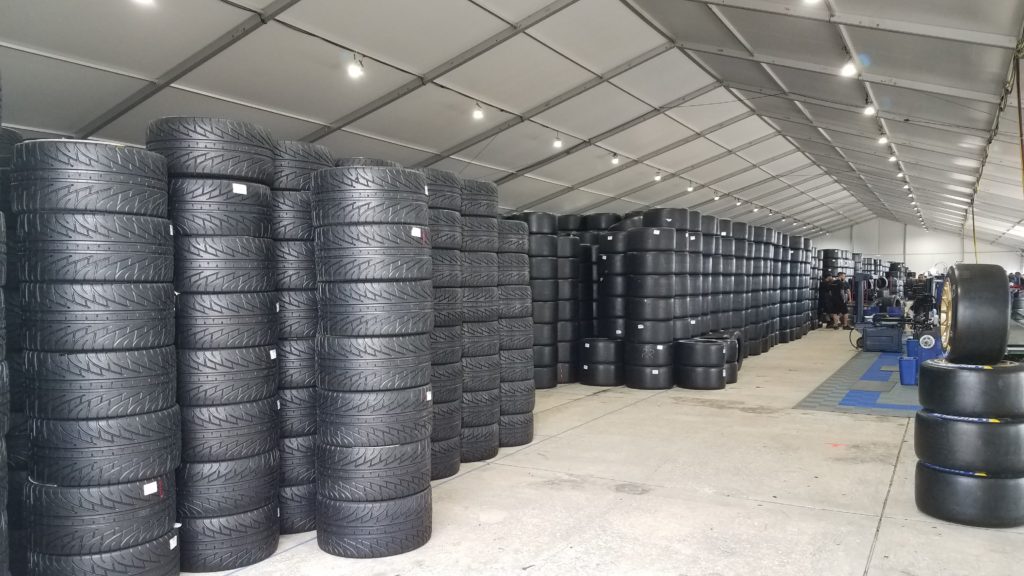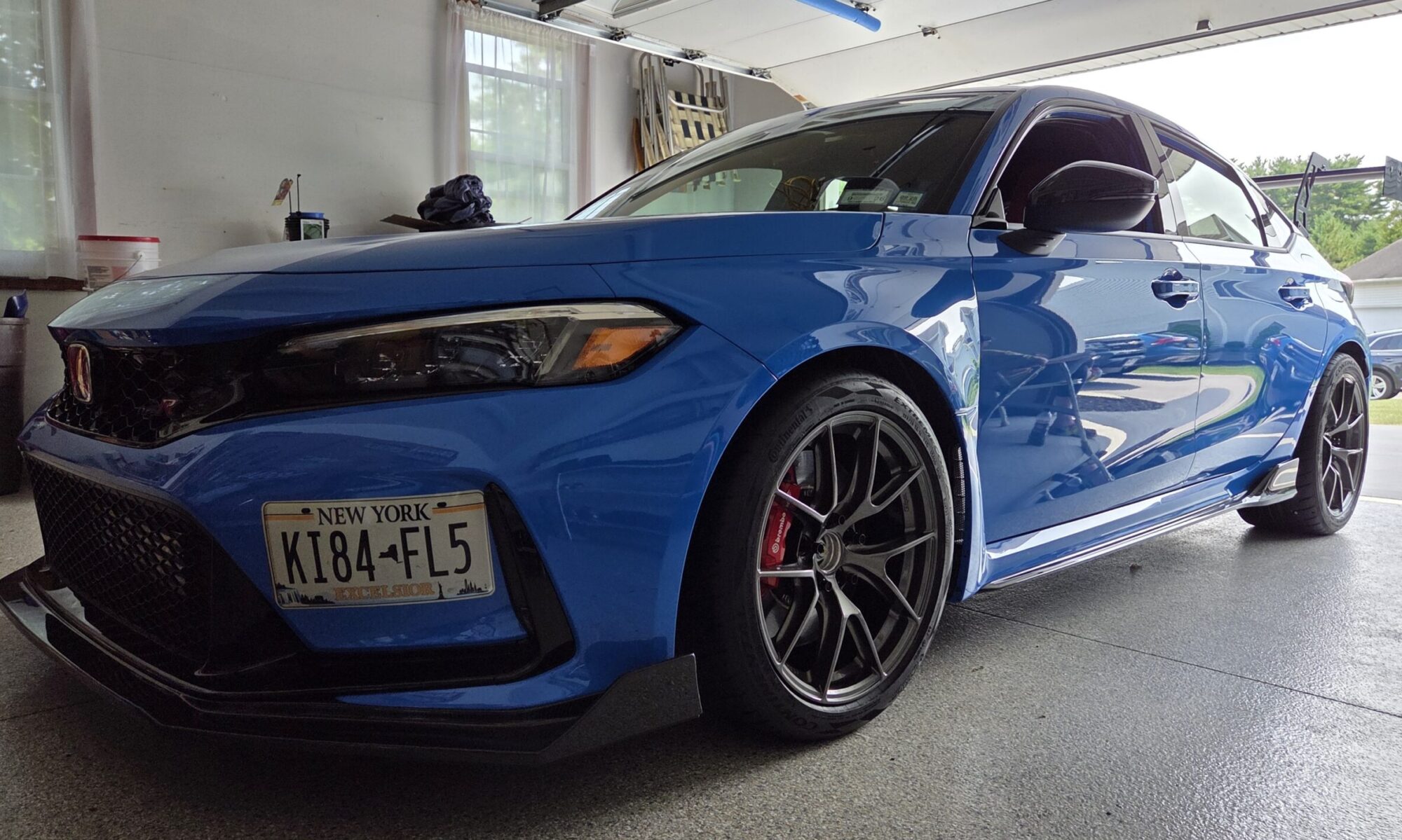The Super Sebring event was a great event, but it turned out to be a grind for the flagger crew. Other than the Wednesday of the event, the rest of the days – Thursday, Friday, and Saturday – were incredibly long days (and nights).
We started our event with registering as corner marshals with Central Florida Region of SCCA, and then wandering around the WEC paddock.

Other than Mr. Alonso, we really didn’t see any other motorsports “stars”, but there were some amazing sights.

The WEC has a decent span of cars, and seem to resemble many of the marques and models racing in the IMSA Weathertech Series.
Friday’s WEC race was OK, but they definitely needed a bigger field of cars, and also need competition that can match the Toyota hybrids. Double the number of cars out there and it would have been a phenomenal event. Saturday’s IMSA race was more entertaining, but the rain Saturday morning meant it had a slow start before the action really got heated up.
So after working both races, here are the differences that impacted flaggers:
- Headlights: the WEC cars use amazingly bright LED lights that seemed to be almost twice as bright as the IMSA cars. We ended up wearing sunglasses during the night time portions in order to look at oncoming cars when blue flagging.
- Sound: the WEC cars were noticeably louder than the IMSA cars, and thus caused more discomfort when attempting to communicate among your corner co-workers. Noise is a major complaint by non-race fans, and cars can be plenty fast without being noisy, so I don’t understand why a series wouldn’t address this issue.
- Safety Cars & Full Course Yellows: While the WEC’s FIA flagging rules can be quite complex in some circumstances, their safety car and full course yellow procedures are great in that they greatly increase on-course safety.







